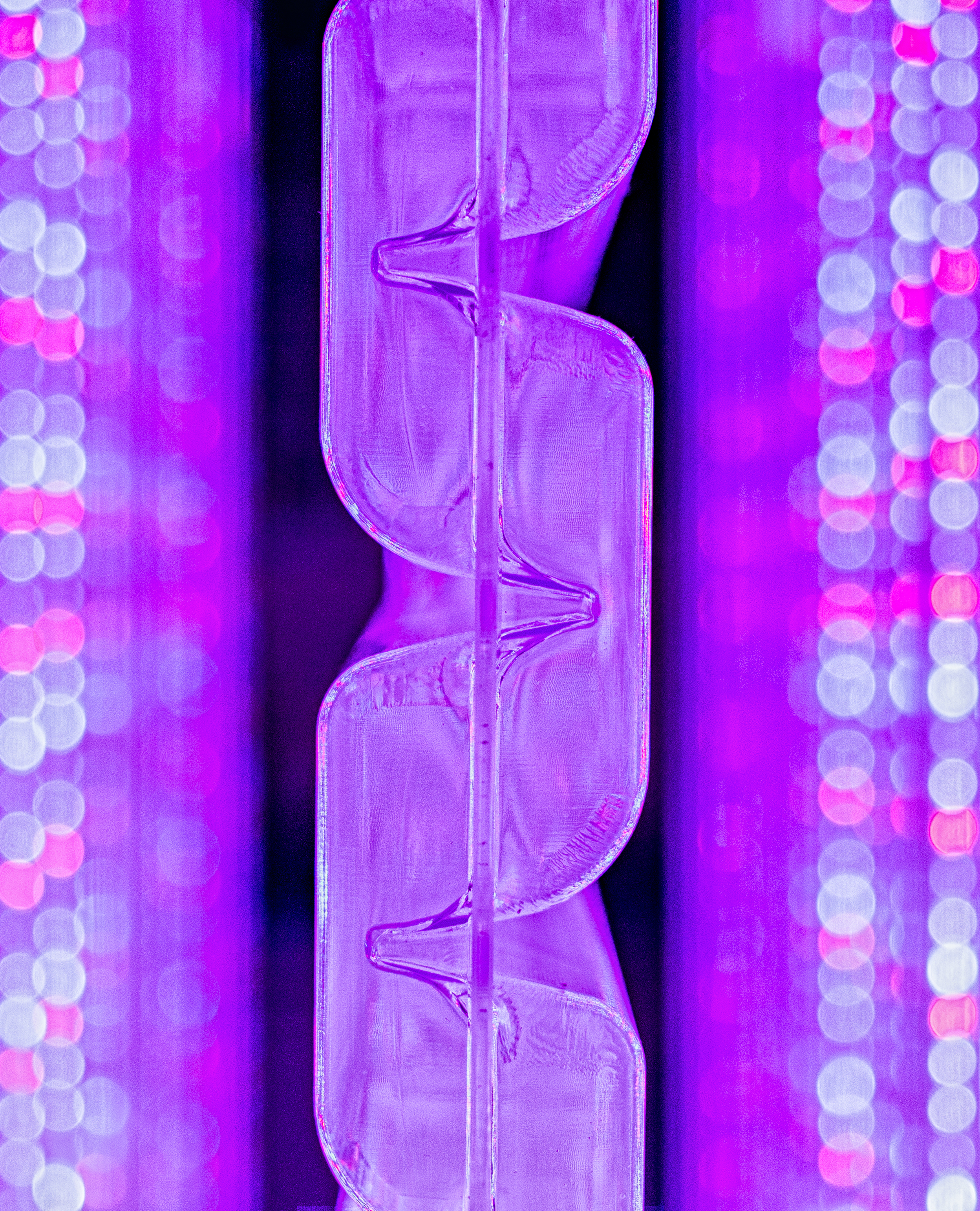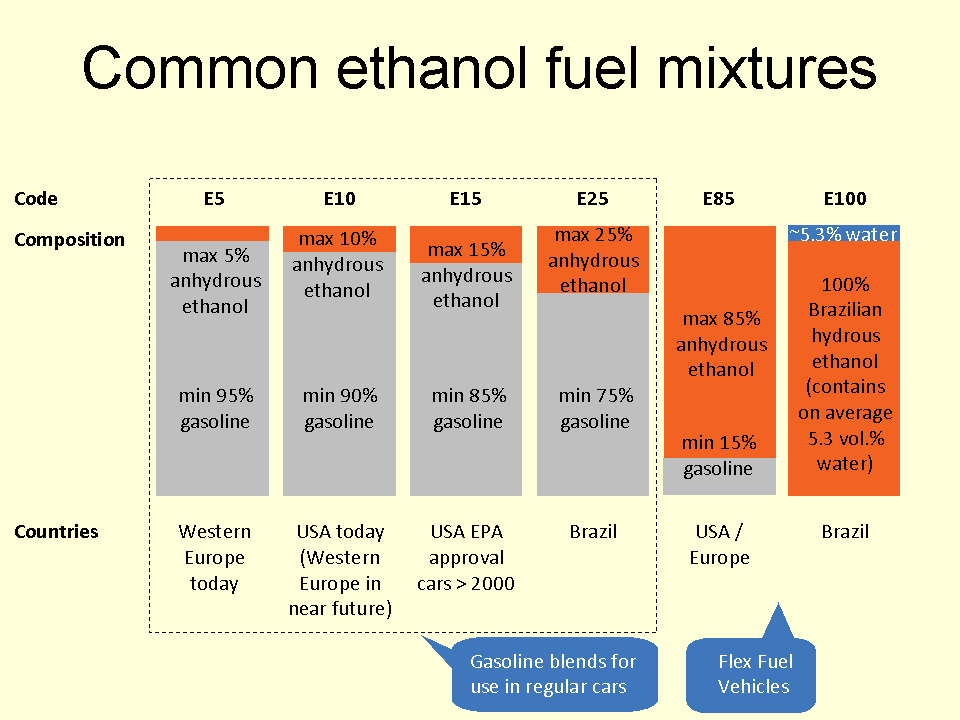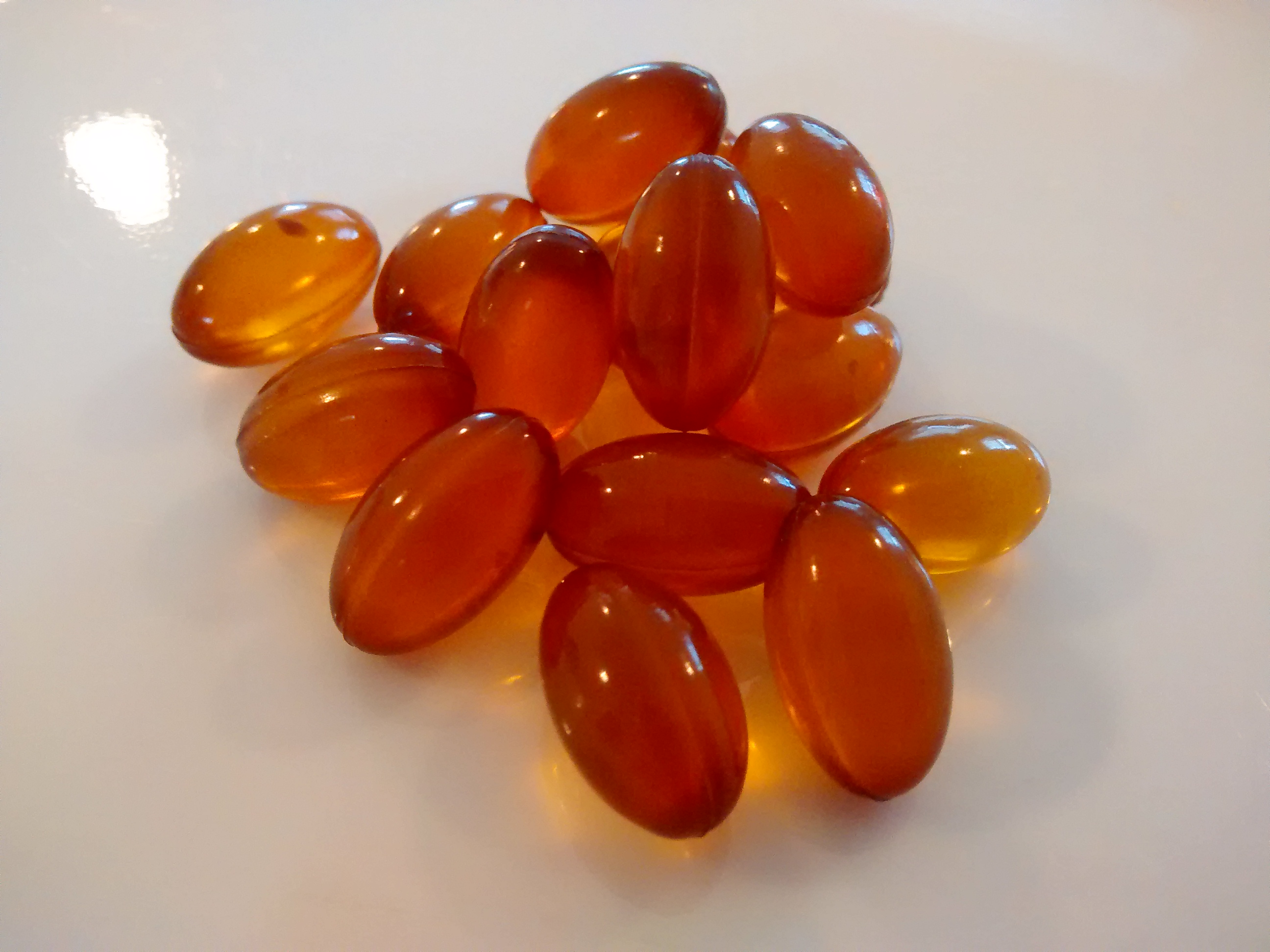|
Algal Fuel
Algae fuel, algal biofuel, or algal oil is an alternative to liquid fossil fuels that use algae as the source of energy-rich oils. Also, algae fuels are an alternative to commonly known biofuel sources, such as corn and sugarcane. When made from seaweed (macroalgae) it can be known as seaweed fuel or seaweed oil. These fuels have no practical significance but remain an aspirational target in the biofuels research area. History In 1942 Harder and Von Witsch were the first to propose that microalgae be grown as a source of lipids for food or fuel. Following World War II, research began in the US, Germany, Japan, England, and Israel on culturing techniques and engineering systems for growing microalgae on larger scales, particularly species in the genus ''Chlorella''. Meanwhile, H. G. Aach showed that '' Chlorella pyrenoidosa'' could be induced via nitrogen starvation to accumulate as much as 70% of its dry weight as lipids. Since the need for alternative transportation fuel had ... [...More Info...] [...Related Items...] OR: [Wikipedia] [Google] [Baidu] |
Algae Fuel In A Beaker
Algae ( , ; : alga ) is an informal term for any organisms of a large and diverse group of photosynthetic organisms that are not plants, and includes species from multiple distinct clades. Such organisms range from unicellular microalgae, such as cyanobacteria, ''Chlorella'', and diatoms, to multicellular macroalgae such as kelp or brown algae which may grow up to in length. Most algae are aquatic organisms and lack many of the distinct cell and tissue types, such as stomata, xylem, and phloem that are found in land plants. The largest and most complex marine algae are called seaweeds. In contrast, the most complex freshwater forms are the Charophyta, a division of green algae which includes, for example, ''Spirogyra'' and stoneworts. Algae that are carried passively by water are plankton, specifically phytoplankton. Algae constitute a polyphyletic group because they do not include a common ancestor, and although eukaryotic algae with chlorophyll-bearing plastids seem to ha ... [...More Info...] [...Related Items...] OR: [Wikipedia] [Google] [Baidu] |
Photobioreactor
Moss photobioreactor to cultivate mosses like ''Physcomitrella patens'' at the laboratory scale A photobioreactor (PBR) refers to any cultivation system designed for growing photoautotrophic organisms using artificial light sources or solar light to facilitate photosynthesis. Photobioreactors are typically used to cultivate microalgae">Photoautotrophism">photoautotrophic organisms using artificial light sources or solar light to facilitate photosynthesis. Photobioreactors are typically used to cultivate microalgae, cyanobacteria, and some mosses. Photobioreactors can be open systems, such as raceway ponds, which rely upon natural sources of light and carbon dioxide. Closed photobioreactors are flexible systems that can be controlled to the physiological requirements of the cultured organism, resulting in optimal growth rates and purity levels. Photobioreactors are typically used for the cultivation of bioactive compounds for biofuels, pharmaceuticals, and other industrial uses. ... [...More Info...] [...Related Items...] OR: [Wikipedia] [Google] [Baidu] |
Butanol Fuel
Butanol, a C-4 hydrocarbon is a promising bio-derived fuel, which shares many properties with gasoline. Butanol may be used as a fuel in an internal combustion engine. It is more similar to gasoline than it is to ethanol. A C4-hydrocarbon, butanol is a drop-in fuel and thus works in vehicles designed for use with gasoline without modification. Both ''n''-butanol and isobutanol have been studied as possible fuels. Both can be produced from biomass (as "biobutanol" ) as well as from fossil fuels (as "petrobutanol"). The chemical properties depend on the isomer (''n''-butanol or isobutanol), not on the production method. Genetically modified organisms Obtaining higher yields of butanol involves manipulation of the metabolic networks using metabolic engineering and genetic engineering. While significant progress has been made, fermentation pathways for producing butanol remain inefficient. Titer and yields are low and separation is very expensive. As such, microbial production o ... [...More Info...] [...Related Items...] OR: [Wikipedia] [Google] [Baidu] |
Bioethanol
Ethanol fuel is fuel containing ethyl alcohol, the same type of alcohol as found in alcoholic beverages. It is most often used as a motor fuel, mainly as a biofuel additive for gasoline. Several common ethanol fuel mixtures are in use around the world. The use of pure hydrous or anhydrous ethanol in internal combustion engines (ICEs) is possible only if the engines are designed or modified for that purpose. Anhydrous ethanol can be blended with :gasoline (petrol) for use in gasoline engines, but with a high ethanol content only after engine modifications to meter increased fuel volume since pure ethanol contains only 2/3 the energy of an equivalent volume of pure gasoline. High percentage ethanol mixtures are used in some racing engine applications since the very high octane rating of ethanol is compatible with very high compression ratios. The first production car running entirely on ethanol was the Fiat 147, introduced in 1978 in Brazil by Fiat. Ethanol is commonly m ... [...More Info...] [...Related Items...] OR: [Wikipedia] [Google] [Baidu] |
Carbohydrate
A carbohydrate () is a biomolecule composed of carbon (C), hydrogen (H), and oxygen (O) atoms. The typical hydrogen-to-oxygen atomic ratio is 2:1, analogous to that of water, and is represented by the empirical formula (where ''m'' and ''n'' may differ). This formula does not imply direct covalent bonding between hydrogen and oxygen atoms; for example, in , hydrogen is covalently bonded to carbon, not oxygen. While the 2:1 hydrogen-to-oxygen ratio is characteristic of many carbohydrates, exceptions exist. For instance, uronic acids and deoxy-sugars like fucose deviate from this precise stoichiometric definition. Conversely, some compounds conforming to this definition, such as formaldehyde and acetic acid, are not classified as carbohydrates. The term is predominantly used in biochemistry, functioning as a synonym for saccharide (), a group that includes sugars, starch, and cellulose. The saccharides are divided into four chemical groups: monosaccharides, disaccharides, ... [...More Info...] [...Related Items...] OR: [Wikipedia] [Google] [Baidu] |
Lipid
Lipids are a broad group of organic compounds which include fats, waxes, sterols, fat-soluble vitamins (such as vitamins A, D, E and K), monoglycerides, diglycerides, phospholipids, and others. The functions of lipids include storing energy, signaling, and acting as structural components of cell membranes. Lipids have applications in the cosmetic and food industries, and in nanotechnology. Lipids are broadly defined as hydrophobic or amphiphilic small molecules; the amphiphilic nature of some lipids allows them to form structures such as vesicles, multilamellar/ unilamellar liposomes, or membranes in an aqueous environment. Biological lipids originate entirely or in part from two distinct types of biochemical subunits or "building-blocks": ketoacyl and isoprene groups. Using this approach, lipids may be divided into eight categories: fatty acyls, glycerolipids, glycerophospholipids, sphingolipids, saccharolipids, and polyketides (derived from condensatio ... [...More Info...] [...Related Items...] OR: [Wikipedia] [Google] [Baidu] |
Salmon
Salmon (; : salmon) are any of several list of commercially important fish species, commercially important species of euryhaline ray-finned fish from the genera ''Salmo'' and ''Oncorhynchus'' of the family (biology), family Salmonidae, native to tributary, tributaries of the North Atlantic (''Salmo'') and North Pacific (''Oncorhynchus'') basins. ''Salmon'' is a colloquial or common name used for fish in this group, but is not a scientific name. Other closely related fish in the same family include trout, Salvelinus, char, Thymallus, grayling, Freshwater whitefish, whitefish, lenok and Hucho, taimen, all coldwater fish of the subarctic and cooler temperate regions with some sporadic endorheic populations in Central Asia. Salmon are typically fish migration, anadromous: they hatch in the shallow gravel stream bed, beds of freshwater headstreams and spend their juvenile fish, juvenile years in rivers, lakes and freshwater wetlands, migrate to the ocean as adults and live like sea ... [...More Info...] [...Related Items...] OR: [Wikipedia] [Google] [Baidu] |
Docosahexaenoic Acid
Docosahexaenoic acid (DHA) is an omega−3 fatty acid that is an important component of the human brain, cerebral cortex, skin, and retina. It is given the fatty acid notation 22:6(''n''−3). It can be synthesized from alpha-linolenic acid or obtained directly from maternal milk (breast milk), fatty fish, fish oil, or algae oil. The consumption of DHA (e.g., from fatty fish such as salmon, herring, mackerel and sardines) contributes to numerous physiological benefits, including cognition. As a component of neuronal membranes, the function of DHA is to support neuronal conduction and to allow the optimal functioning of neuronal membrane proteins (such as receptors and enzymes). Structurally, DHA is a carboxylic acid (-''oic acid'') with a 22- carbon chain (''docosa-'' derives from the Ancient Greek for 22) and six (''hexa-'') '' cis'' double bonds (''-en-''); with the first double bond located at the third carbon from the omega end. Its trivial name is ''cervonic acid'' (from ... [...More Info...] [...Related Items...] OR: [Wikipedia] [Google] [Baidu] |
Eicosapentaenoic Acid
Eicosapentaenoic acid (EPA; also icosapentaenoic acid) is an omega−3 fatty acid. In physiological literature, it is given the name 20:5(''n''−3). It also has the trivial name timnodonic acid. In chemical structure, EPA is a carboxylic acid with a 20-carbon chain and five '' cis'' double bonds; the first double bond is located at the third carbon from the omega end. EPA is a polyunsaturated fatty acid (PUFA) that acts as a precursor for prostaglandin-3 (which inhibits platelet aggregation), thromboxane-3, and leukotriene-5 eicosanoids. EPA is both a precursor and the hydrolytic breakdown product of eicosapentaenoyl ethanolamide (EPEA: C22 H35 NO2; 20:5,''n''−3). Although studies of fish oil supplements, which contain both docosahexaenoic acid (DHA) and EPA, have failed to support claims of preventing heart attacks or strokes, a recent multi-year study of Vascepa ( ethyl eicosapentaenoate, the ethyl ester of the free fatty acid), a prescription drug containing onl ... [...More Info...] [...Related Items...] OR: [Wikipedia] [Google] [Baidu] |
Polyunsaturated Fat
In biochemistry and nutrition, a polyunsaturated fat is a fat that contains a polyunsaturated fatty acid (abbreviated PUFA), which is a subclass of fatty acid characterized by a backbone with two or more carbon–carbon double bonds. Some polyunsaturated fatty acids are essentials. Polyunsaturated fatty acids are precursors to and are derived from polyunsaturated fats, which include drying oils. Nomenclature The position of the carbon-carbon double bonds in carboxylic acid chains in fats is designated by Greek letters. The carbon atom closest to the carboxyl group is the ''alpha'' carbon, the next carbon is the ''beta'' carbon and so on. In fatty acids the carbon atom of the methyl group at the end of the hydrocarbon chain is called the ''omega'' carbon because ''omega'' is the last letter of the Greek alphabet. Omega-3 fatty acids have a double bond three carbons away from the methyl carbon, whereas omega-6 fatty acids have a double bond six carbons away from the methyl car ... [...More Info...] [...Related Items...] OR: [Wikipedia] [Google] [Baidu] |
Monounsaturated Fat
In biochemistry and nutrition, a monounsaturated fat is a fat that contains a monounsaturated fatty acid (MUFA), a subclass of fatty acid characterized by having a double bond in the fatty acid chain with all of the remaining carbon atoms being single-bonded. By contrast, polyunsaturated fatty acids (PUFAs) have more than one double bond. Molecular description Monounsaturated fats are triglycerides containing one unsaturated fatty acid. Almost invariably that fatty acid is oleic acid (18:1 n−9). Palmitoleic acid (16:1 n−7) and cis-vaccenic acid (18:1 n−7) occur in small amounts in fats. Health Studies have shown that substituting dietary monounsaturated fat for saturated fat is associated with increased daily physical activity and resting energy expenditure. More physical activity was associated with a higher-oleic acid diet than one of a palmitic acid diet. From the study, it is shown that more monounsaturated fats lead to less anger and ... [...More Info...] [...Related Items...] OR: [Wikipedia] [Google] [Baidu] |





